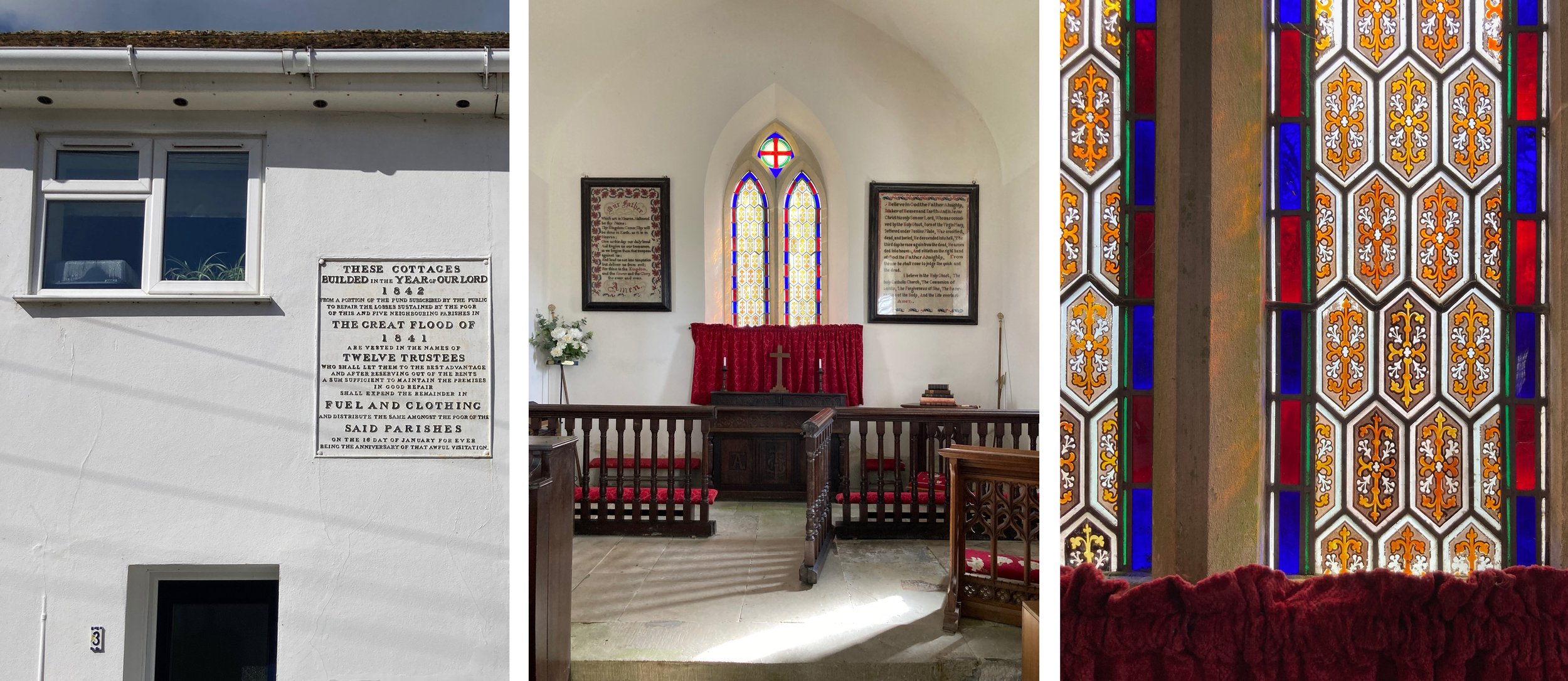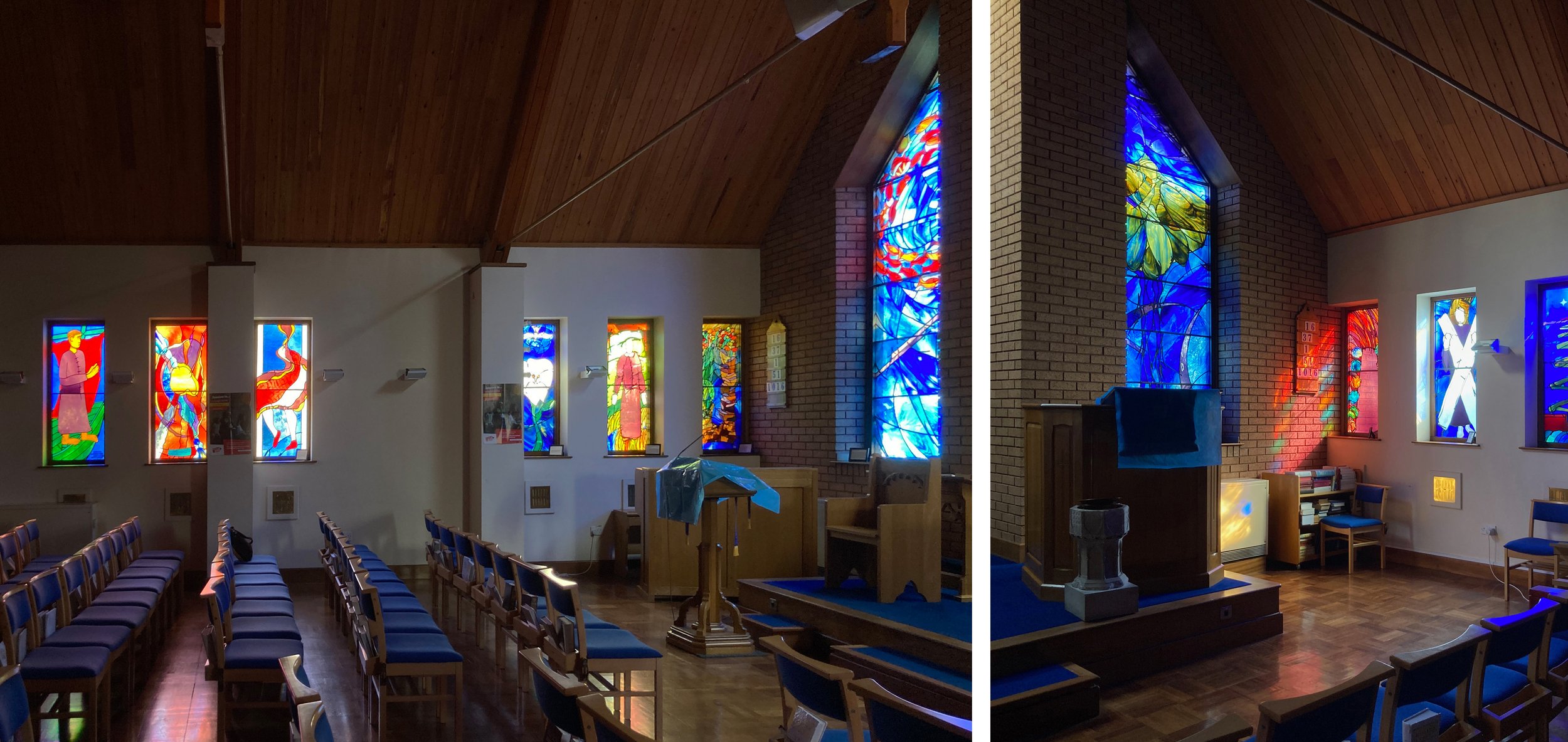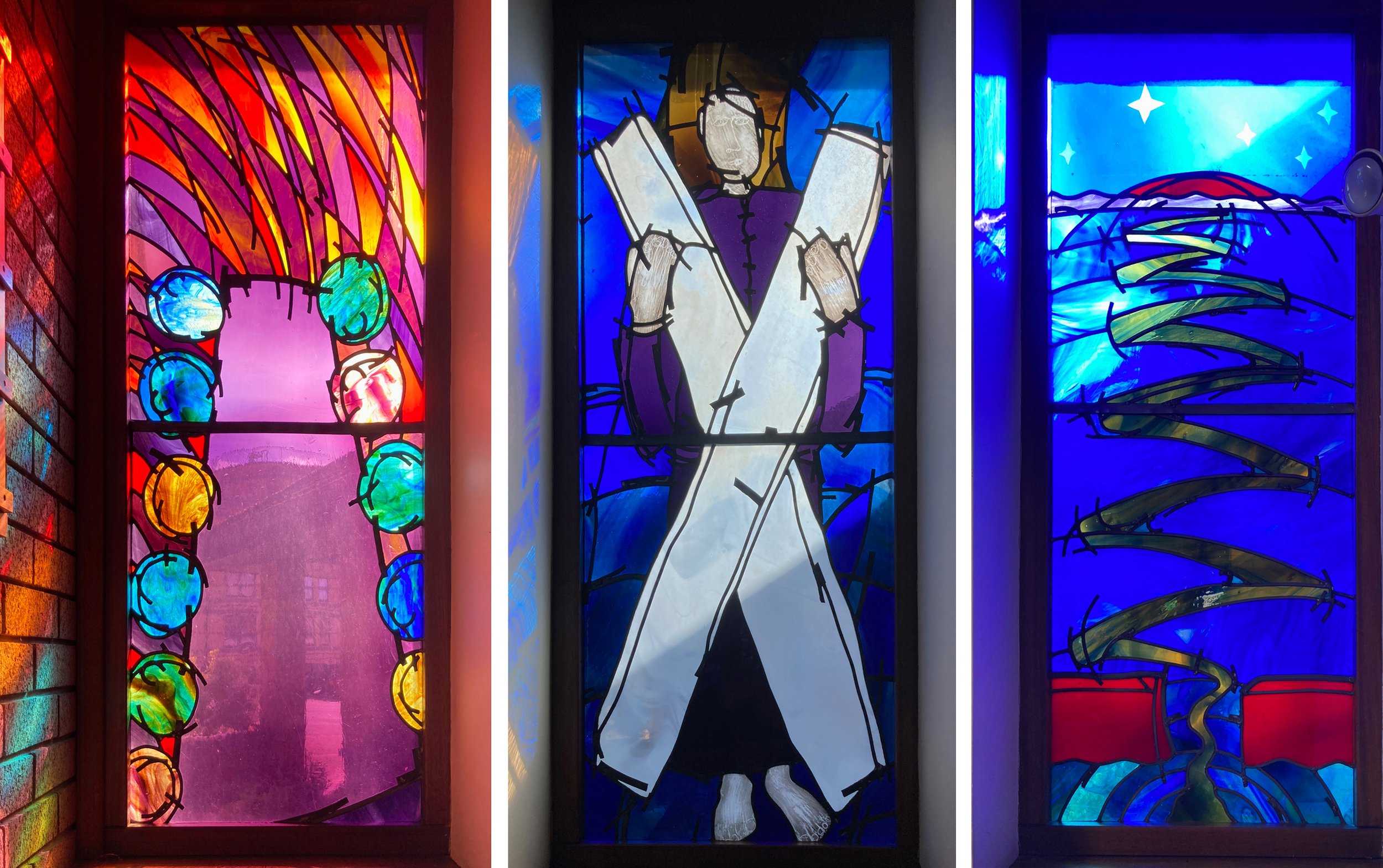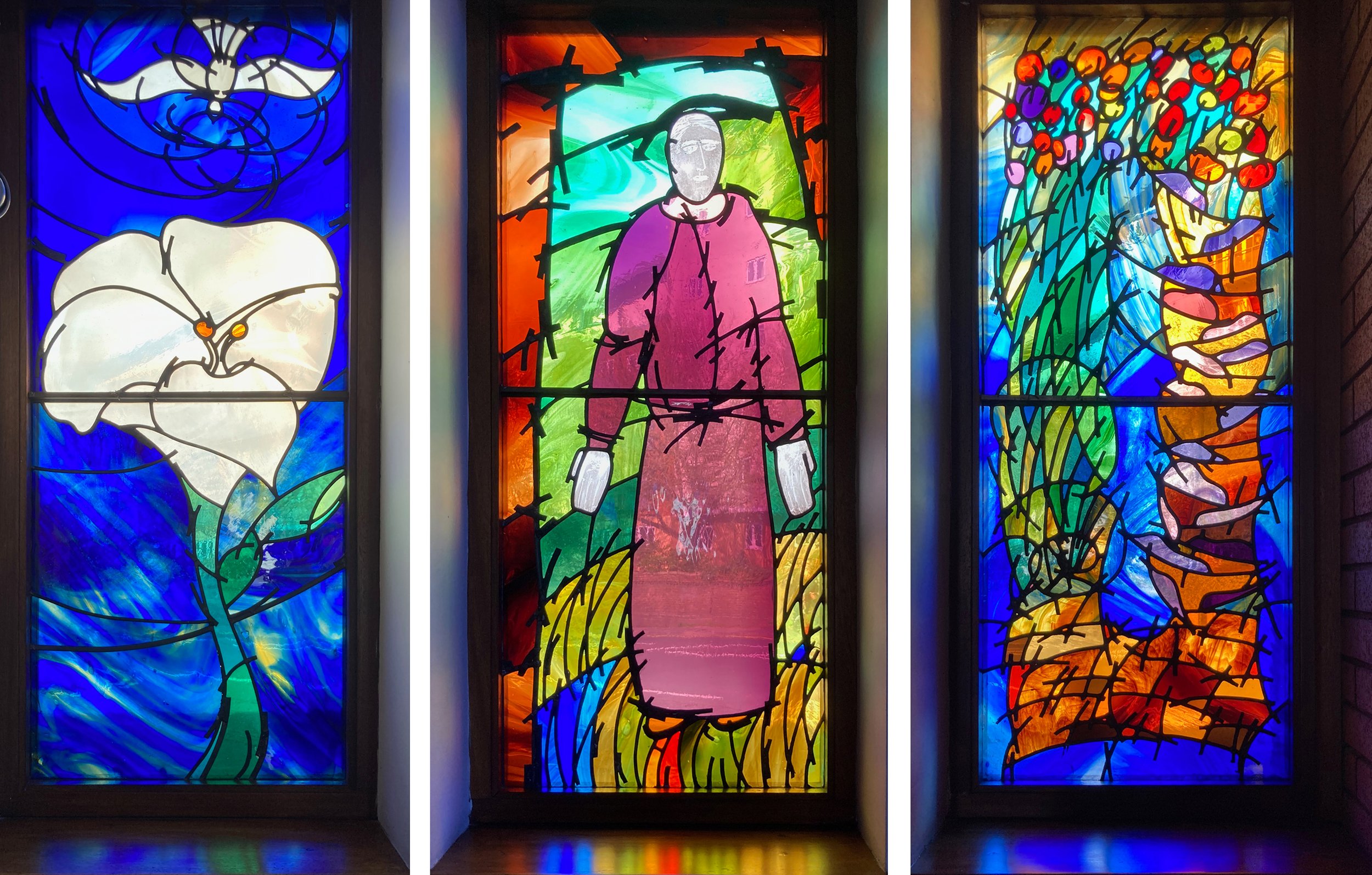We took a walk around the village of Shrewton as suggested by the Churches Conservation Trust because there are three churches under their care within a 5km stroll, plus two other churches on the same route and two chapel buildings. It’s hard to imagine seven active congregations in this small area. The villages feel isolated because of their position on Salisbury Plain which is no longer a rich, farming area but one dominated now by the presence of the army. Following a footpath along the River Till and with other parts of the route skirting flooded fields, it was interesting to see two sets of flood cottages with signs from 1842 (below left) reminding us of the date … for ever being the anniversary of that awful visitation - The Great Flood of 1841 …. when 3 people died and 72 houses were destroyed by a surge in the river - also hard to imagine.
St Andrew’s, Rollestone
We started at St Andrew’s in the parish of Rollestone, a tiny church on the edge of a field, everything tidy and well coordinated inside (above). The larger St Mary’s church in the centre of Shrewton has become the main place of worship for the surrounding parishes, inside is some interesting glass including a really effective, beautifully blue, ascension east window (below centre and right) and a screen in front of the tower patched with a catalogue of pressed, textured glasses (below left).
St Mary’s, Shrewton
St Mary’s, Orcheston
Inside St Mary’s in the neighbouring village of Orcheston I took a snapshot that combines the two categories of churchesinchurches and kitchensinchurches in an understated way (above left). You can tell this is an active, rather than CCT, church also by the window displays, intended to be engaging rather than tasteful. The memorial window is in the porch, not to a cat but to the lucky octogenarian Sophie Hamilton-Moore.
St George’s, Orcheston
In case you’re wondering what the outside of the churches really look like, this is St. George’s (above left) also in Orcheston, a village with a feeling of being tucked away both in space and time. Inside the small church everything is calm, while outside horses feed in the flooded fields and even the motorbikes are quiet (below left). The last church on our walk was in another of Shrewton’s old parishes, Maddington, with an equally beautiful and subtly decorated interior. In every church you can find a satisfying bit of stained glass detail, this one comes from the bottom of the east window (by Lavers, Barraud & Westlake 1872).
St Mary’s, Maddington



























